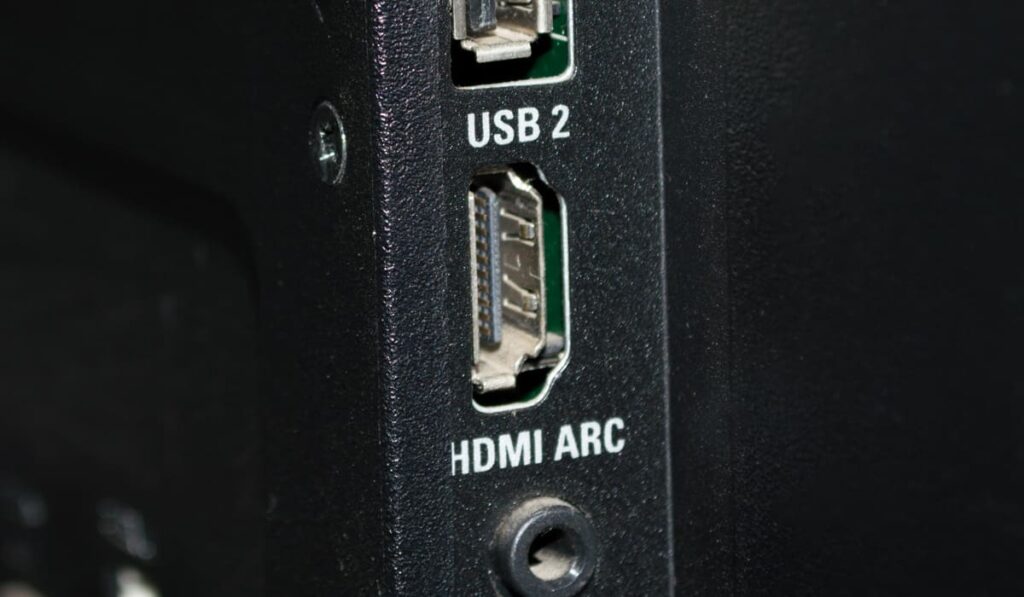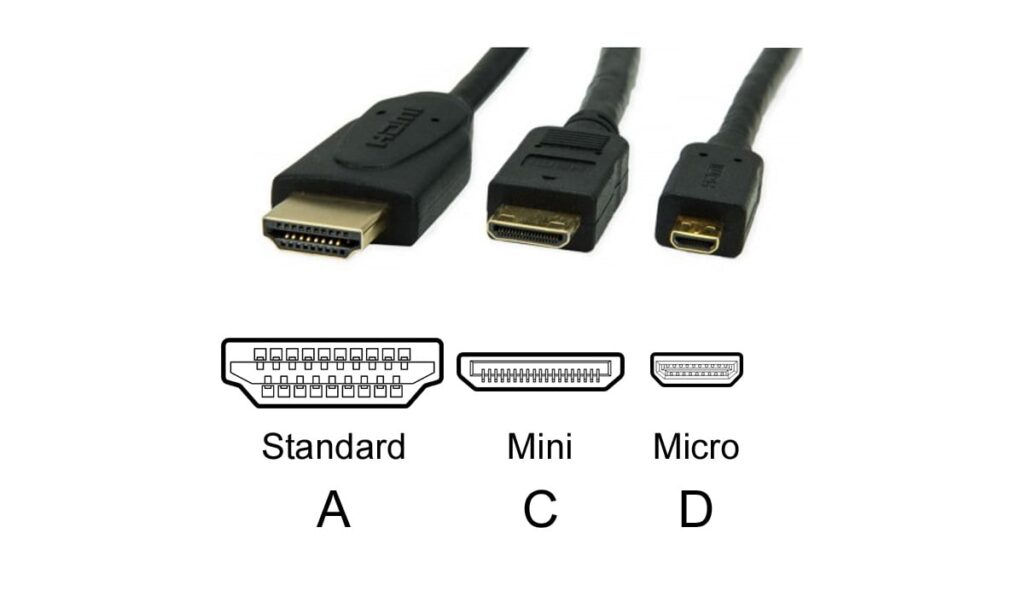Getting audio from your TV to external speakers can be a head-scratching task for some. Depending on the type of TV and audio system you have, there could be only one or maybe many kinds of audio connections available to you. Perhaps your TV has both HDMI ARC and digital optical audio, both of which are great options. So which one is better? HDMI ARC or digital optical audio?
HDMI ARC is a better option. It supports Dolby Digital Plus, Dolby Atmos, and up to 7.1 channels of uncompressed audio while Digital Optical only supports Dolby Digital and up to 5.1 channels of uncompressed audio. HDMI ARC also offers features like CEC, reducing the number of remotes to manage.
Since your television may have both digital optical audio and HDMI ARC, you may be stuck between a rock and a hard place determining which one is best to use. There are many facets to consider like cable length, quality, connections available, and the cables you have on hand. If you would like to find out about audio quality, features, and how digital optical and HDMI ARC compare, you’re in the right place!
How HDMI ARC and Digital Optical Audio Cable Compare

HDMI ARC and digital optical audio connections are sometimes both available on televisions. However, digital optical audio (also known as TOSLINK) is the older technology, while HDMI ARC, introduced in 2009 with CEC, offers more advanced features. HDMI Audio Return Channel standard (ARC) can pass both audio and video signals on one cable, simplifying connections to multiple devices.
However, an even newer version of HDMI ARC is called HDMI eARC (enhanced Audio Return Channel). HDMI eARC was first introduced with the HDMI 2.1 chipset but has been made available on many TVs that don't have HDMI 2.1
CEC, a subset of HDMI, enables audio control with a single remote. This means you can adjust volume and power for your TV and connected devices using just one remote.
Digital optical audio cables transmit audio between devices using fiber optic technology, which is resistant to electromagnetic interference (EMI), unlike copper wires in HDMI cables. Although EMI is typically not an issue in home entertainment setups.
What are the Audio Quality Differences Between HDMI ARC, eARC, and Digital Optical?
The table below details the different levels of audio quality that HDMI ARC, HDMI eARC, and Digital Optical can handle:
| Audio Capabilities | Digital Optical (Good) | HDMI ARC (Better) | HDMI eARC (Best) |
|---|---|---|---|
| Stereo 2.0 | Yes (Lossless) | Yes (Lossless) | Yes (Lossless) |
| 5.1 Channels | Yes (Lossy) | Yes (Lossy) | Yes (Lossless) |
| 7.1 Channels | No | Yes1 (Lossy) Dolby Digital Plus | Yes (Lossless) Dolby TrueHD, DTS:X |
| Dolby Digital (Lossy) | Yes | Yes | Yes |
| Dolby Digital Plus2 (Lossy) | No | Yes | Yes |
| Dolby TrueHD2 (Lossless) | No | No | Yes |
| DTS Digital Surround (Lossy) | Yes | Yes | Yes |
| DTS-HD Master Audio (Lossless) | No | No | Yes |
| DTS:X | No | No | Yes |
2. Dolby Digital Plus and Dolby TrueHD can both include Dolby Atmos Audio. Dolby Digital Plus can provide lossy or compressed Dolby Atmos, while Dolby TrueHD can provide lossless or uncompressed Dolby Atmos.
Check out the video below for an in-depth analysis of HDMI ARC and Digital Optical, exploring their differences in audio codec support, including Dolby Atmos and DTS: X.
What Features Are Supported by Digital Optical, HDMI ARC, and HDMI eARC?
The below table breaks down the different features supported by Digital Optical, ARC, and eARC:
| Function | Digital Optical (Good) | HDMI ARC (Better) | HDMI eARC (Best) |
|---|---|---|---|
| Cable Type | Optical (S/PDIF) | HDMI | HDMI w/Ethernet |
| Volume Up/Down | No* | Yes (CEC) | Yes (CEC) |
| Mute | No* | Yes (CEC) | Yes (CEC) |
| Power On/Off | No | Yes (CEC) | Yes (CEC) |
| Automatically Change Input | No | Yes (CEC) | Yes (CEC) |
As you can see from this table, HDMI ARC and eARC are far superior when it comes to the features offered because of HDMI CEC.
Soundbars with Digital Optical Audio and HDMI ARC
If your TV has both HDMI ARC and digital optical audio, you might still be trying to figure out which connection is best for you. Despite the practical advantages and features of HDMI ARC, you might still wonder if using digital optical audio makes sense. We also have a detailed guide on this if you're interested.
In short, if you have HDMI ARC on both your TV and soundbar, then use HDMI ARC. If you don't have HDMI ARC, then use digital optical. Most soundbars support less than 5.1 surround sound channels of audio, so you can see that in terms of audio quality, there isn't really a difference.
But if your soundbar supports more than 5.1 channels of audio, Dolby Atmos, and/or DTS:X, then a digital optical cable will severely limit the system's audio quality.
There are plenty of soundbars and A/V receivers available with both HDMI ARC and digital optical audio inputs. Most soundbar and audio systems that have HDMI ARC still keep legacy connections like auxiliary audio and digital optical audio to simplify connections.
However, suppose your television only has digital optical audio and not HDMI. In that case, it may make sense to opt for a soundbar with just a digital optical audio input. Soundbars without HDMI ARC input are generally lower cost than ones compatible with HDMI ARC connection.
When is Digital Optical a Better Option than HDMI ARC

There are certain cases where digital optical audio could be a better choice. For instance, if your existing setup, i.e., TV, sound system, etc., works on digital optical audio and does not have HDMI ARC, then digital optical is better.
Furthermore, digital optical can be a more reliable connection. It’s lasted so long because it is not only affordable, but it delivers excellent audio quality too. It is much cheaper than HDMI and is not susceptible to EMI like copper-based HDMI cords are.
Digital optical doesn't induce audio delay nearly as much as HDMI ARC does. On certain TVs and soundbars, HDMI ARC isn't always in sync and can cause the audio to lag behind a bit, resulting in out-of-sync audio and video. This can be very frustrating, and you'll need to power cycle both the TV and soundbar to fix the issue.
Digital optical cables outperform HDMI in maximum length before audio signal degradation. While HDMI reaches around 50 feet without an active extender, digital optical cables can extend up to approximately 100 feet without a noticeable audio quality decline.
Due to low voltage (5 volts) and EMI concerns, HDMI has a shorter maximum run length. Longer cords with higher resistance can slow down voltage, causing audio issues. In contrast, digital optical digital audio cables offer a stable audio stream, outperforming standard HDMI in certain situations.
When is HDMI ARC a Better Option than Digital Optical

Generally, HDMI ARC is preferable to digital optical audio due to its superior sound quality and additional features like CEC (consumer electronics control), which are some of the benefits of HDMI ARC. This enables centralized control of volume and power for both the TV and external speaker system using a single remote controller.
HDMI ARC excels in its ability to use multiple devices as the audio source. For instance, with a TV connected to a soundbar using a single HDMI cord, devices like a PlayStation 5, Blu-ray player, and Apple TV can be plugged into the TV's HDMI inputs. The TV then channels the audio to the soundbar through HDMI ARC, eliminating the need to directly connect all devices to the soundbar.
The only negative in this situation is that HDMI ARC takes away one of the HDMI Inputs on the TV. So if your TV only has 3 HDMI inputs, one of which is the HDMI ARC port, then you only have 2 HDMI inputs.
Conclusion – Optical VS HDMI ARC
HDMI ARC vs Optical Audio is an interesting comparison in terms of sound quality, latency, and bandwidth. In general, if you have the Optical option, that will be higher audio quality, but will limit the HDMI CEC options you have available.
- Sound Quality – In sound quality, HDMI ARC excels over Optical Audio, supporting higher bandwidth for uncompressed formats like Dolby TrueHD and DTS-HD Master Audio. For superior audio fidelity, HDMI ARC is the preferred choice.
- Latency – HDMI ARC usually has lower latency compared to Optical Audio, making it preferable for applications like gaming or home theaters where precise synchronization is crucial. If minimizing audio delay is a priority, HDMI ARC is commonly the better choice.
- Bandwidth – HDMI ARC surpasses Optical Audio in bandwidth, supporting higher data transmission for uncompressed audio formats. This makes HDMI ARC the preferred choice for superior bandwidth capabilities.





